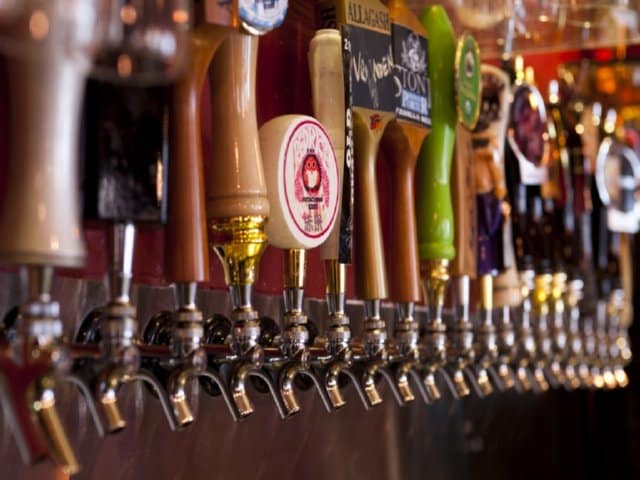Brew Pubs are an increasingly popular restaurant category. The trend has grown as Americans become more sophisticated in their beer and ale consumption behavior. Starting in the 1980s with California Establishments such as Gordon Biersch and the Karl Strauss Brewing Company, we now find other local and nationwide brew pubs becoming favorite meeting places.
Many cities have embraced brew pubs as a way to create a more exciting buzz about their towns. Even formerly conservative places such as Grand Rapids, Michigan have rebranded themselves as “Beer City USA”. It’s a far cry from a place formerly derided by some as “Bland Rapids”. Today, the city features no fewer than 40 local breweries. Among the more famous is Founder’s Brewing.
Brew Pubs have thrived for a number of reasons, beyond the love of suds. Among other reasons for their success, brew pubs offer:
- Group Bonding – a place to hang with family and friends.
- Local Affinity – arguably the most successful establishments are local or regional.
- Identity/Status – beer lovers don’t just love beer. Increasingly, they see it as part of their identity and as a lifestyle.
- Events & Activities – a place not just to eat, drink and meet friends, but also to enjoy entertainment and take part in activities.
- An Experience – not only can you have a beer, you can often do so in an actual brewery. You can’t replicate that at home.
- Good Food – you may go there to eat as well, but it’s only part of the reason you go.
Of course the more genuine and local the better. The closer the experience is to visiting a real brewery, the better. That said a number of regional and national concepts have been developed to piggyback on the love of a good brew. In many cases (no pun intended) a conventional casual-dining store installs taps and barrels. Some have chosen to alter the formula somewhat, installing televisions, sports decor, and other accouterments to turn the experience into something a bit more akin of a sports bar. Although less authentic than the original, these concepts still are doing well, as they give a reason to visit (e.g. sampling a variety of beers; viewing sports with friends) in addition to just enjoying a meal.
The success of brew pubs illustrates that casual dining still has the potential to grow. But operators need to do more than offer a conventional menu and a faux ambiance to attract diners. People are looking for a more genuine experience, and one that taps into (pun intended) more varied desires. Brew pubs are doing this, and it’s a big part of why they’re growing. Other concepts can offer more holistic experiences to re-invigorate their own parts of the casual restaurant segment.



